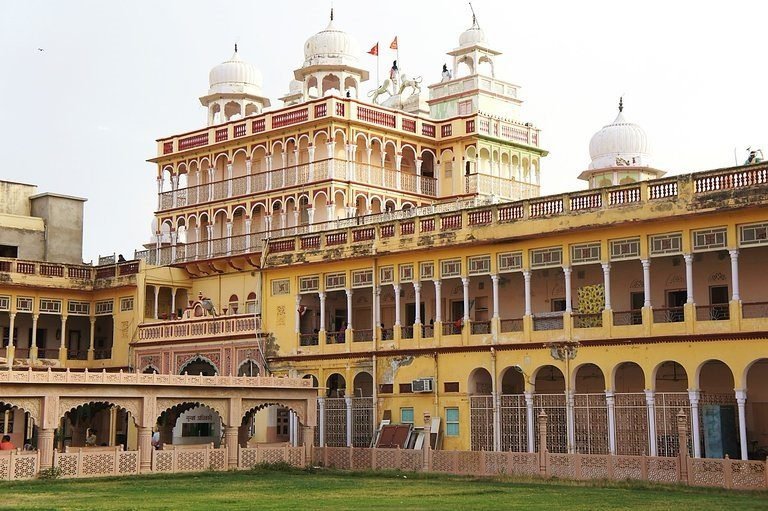Rani Sati Temple is a temple located in Jhunjhunu, Jhunjhunu district, in the state of Rajasthan, India. It is the largest temple in India dedicated to Rani Sati, a Rajasthani lady who lived sometime between the 13th and 17th centuries and committed sati (self-immolation) on the death of her husband. Various temples in Rajasthan and elsewhere are dedicated to the worship of her and to commemorate the act of her. Rani Sati is also called Narayani Devi and is known as Dadiji (grandmother).
Story
The story of Rani Sati Dadi Maa begins at the time of the Mahabharata. When Abhimanyu died in the Battle of Mahabharat, Uttara (Narayani in Kaliyug) was shocked and angry to see that Abhimanyu (Tandhan in Kaliyug) lost his life in the act of betrayal of Kauravas, so Uttara wants to end his life as a act of honor. and for Kauravas to be aware of his wrongdoing. But at the moment of giving his life, Uttara was about to give life to a child. Shree Krishna seeing this told Uttara to forget about the idea of ending her life, as this goes against the Dharma of a Woman who is about to give a life. life to a child. Realizing the mistake, Uttara asked Shree Krishna to marry Abhimanyu and wished her to be sati in her next life.
As granted by Lord Krishna, she in her next life was born as the daughter of Gursamal Birmewal in Dokwa village in Rajasthan and was named Narayani. Abhimanyu was born in Hissar as the son of Jaliram Jalan and was called Tandhan Jalan. Tandan and Narayani were married and led a peaceful life. She was in possession of a beautiful horse that was being watched by the son of the King of Hissar for quite some time. Tandhan refused to give his precious horse to the king’s son.
The king’s son decides to acquire the horse by force and challenges Tandan to a duel. Tandan bravely fights the battle and kills the king’s son. The enraged king kills Tandan in front of Narayani in battle. Narayani, symbol of bravery and feminine power, fights with the king and kills him. She then she ordered Ranaji (the horse keeper) to make immediate arrangements for her to be set on fire along with the cremation of her husband.
Ranaji, who plays a vital role in fulfilling her wish to be sati with her husband, receives the blessing from Narayani that her name will be taken and worshiped along with her name and, ever since, she is known as Rani Sati.
Temple
The temple stands out for not having paintings or statues of male or female gods. Instead, followers religiously worship a trishul that represents power and strength. A portrait of Rani Sati dadiji is found in the pradhan mand. The temple is built with white marble and has colorful wall paintings.
Also in the Rani Sati temple complex are Lord Hanuman Temple, Sita Temple, Thakur Ji Temple, Lord Ganesha Temple and Shiva Temple. A regular distribution of ‘Prasad’ takes place after each ‘aarti’. In addition to the main temple, there are twelve smaller sati temples. A huge statue of Lord Shiva stands in the center of the complex and is surrounded by green gardens. Inside the temple, the interiors are adorned with exquisite murals and glass mosaics that depict the entire history of the place.


0 Comments